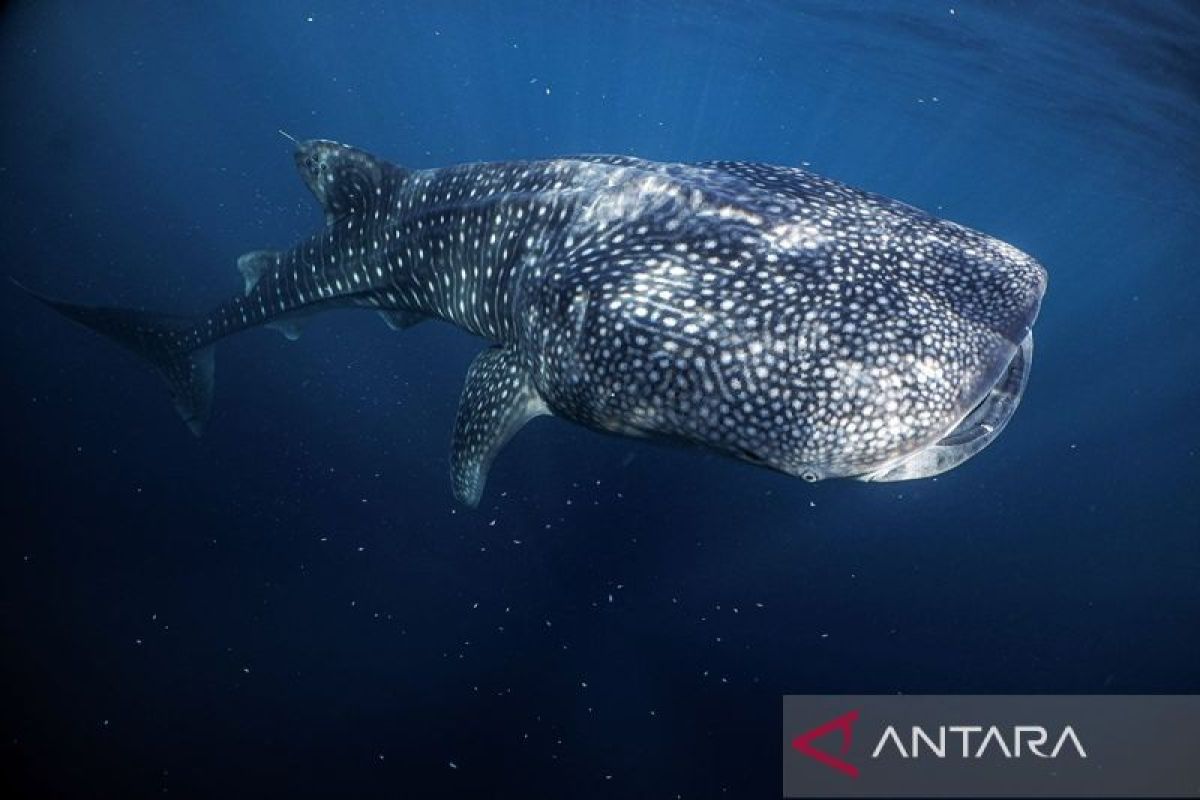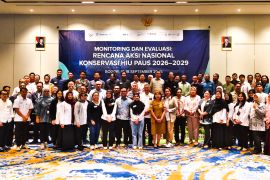A new approach is necessary since the overlap between the habitats and feeding grounds of whale sharks (Rhincodon typus) and large shipping vessel lanes has been shown to be closely linked to an alarming decline in the whale shark population.
In a statement released in Jakarta on Thursday, focal species conservation senior manager at KI, Iqbal Herwata, said that understanding whale shark movement is key to saving their global population, which has recorded a drastic decline of up to 50 percent.
According to a study by global researchers, 92 percent of the horizontal space use of whale sharks overlaps with large vessel shipping lanes, he informed.
“And almost 50 percent of the vertical space used by whale sharks overlaps with large vessel traffic,” he added.
The study’s data was based on whale shark tagging and a combination of whale shark satellite movement data and vessel activity. The study, which involved Konservasi Indonesia, was published in the scientific journal Proceedings of the National Academy of Sciences (PNAS).
“The study also shows that the estimated collision risk is closely correlated with reports of whale shark deaths due to ship collisions, indicating higher mortality rates in areas with the highest levels of overlap,” Herwata informed.
In the context of conservation, without serious intervention, population recovery could take up to a century, and Indonesia is on an important migration route used by the endangered species, he added.
Determining whale shark movements and the duration of their stopovers is key to effective protection, including preventing ship collisions, which are one of the main threats to the species, he said.
Related news: A massive undertaking to protect whale sharks in Indonesia
In certain areas of whale shark migration or aggregation, he added, it is necessary to implement seasonal management zones with a maximum ship speed limit of 10 knots.
Temporary deceleration zones that are enforced after detecting the presence of animals and prohibiting crossings in important areas during the aggregation season have been proven to reduce high-risk interactions.
There is also a need to use technology, including acoustic buoy sound sensors, thermal radars, and real-time detection platforms for the purpose.
These measures are needed considering the concerning population decline in the species, which inhabits tropical and warm waters globally.
Considering that Indonesia is an important migration route for whale sharks in the Indo-Pacific region, he said, the protection of the species is now an urgent need.
Related news: New whale sharks found in Central Papua's Cendrawasih Bay
Translator: Prisca Triferna Violleta, Cindy Frishanti Octavia
Editor: Rahmad Nasution
Copyright © ANTARA 2025










